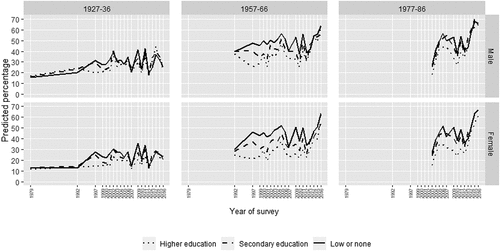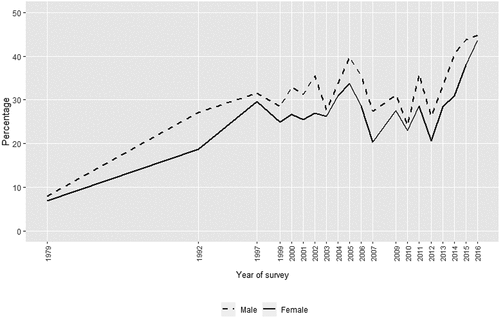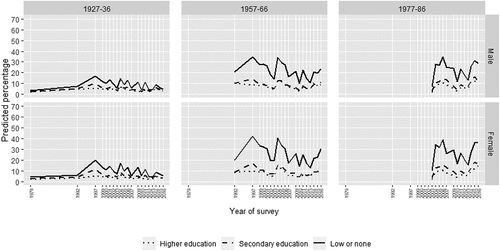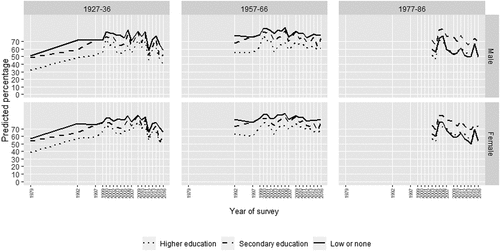Figures & data
Table 1. Salient educational and political experiences of the birth cohorts.
Table 2. Highest educational attainment, by year of survey.
Figure 2. Percentage supporting Independence, by birth cohort and sex, restricted to survey years 2013–16.
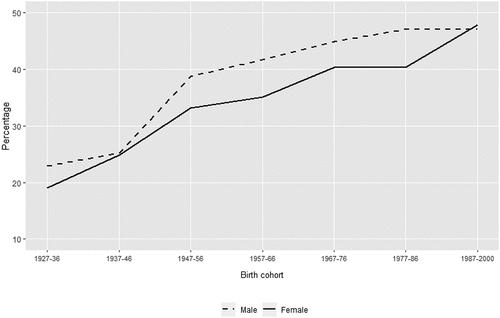
Table 3. Highest educational attainment, by birth cohort, restricted to survey years 2013–16.
Figure 3. Predicted percentage supporting Independence, by year of survey, sex and education, 1979–2016.
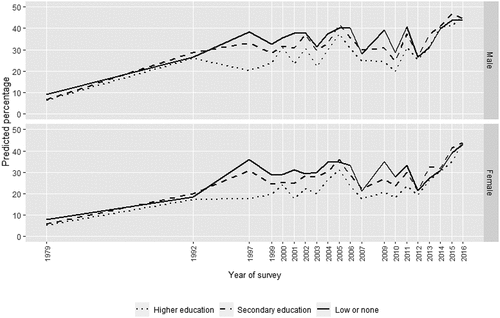
Figure 4. Predicted percentage supporting independence, by year of survey, sex, birth cohort, and education: birth cohorts -1926 and 1927–36
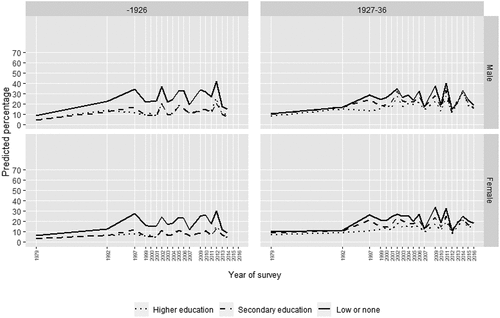
Figure 5. Predicted percentage supporting Independence, by year of survey, sex, birth cohort, and education: birth cohorts 1937–46 and 1947–56.
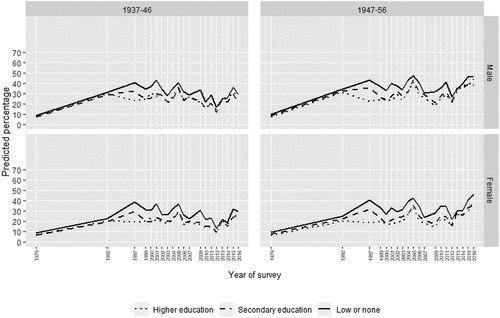
Figure 6. Predicted percentage supporting Independence, by year of survey, sex, birth cohort, and education: birth cohorts 1957–66 and 1967–76, and years 1992–2016.
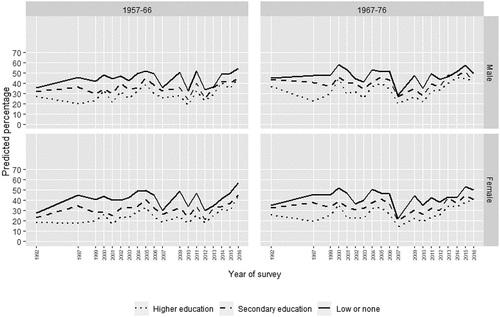
Figure 7. Predicted percentage supporting Independence, by year of survey, sex, birth cohort, and education: birth cohorts 1977–86 and 1987–91, and years 2003–16.
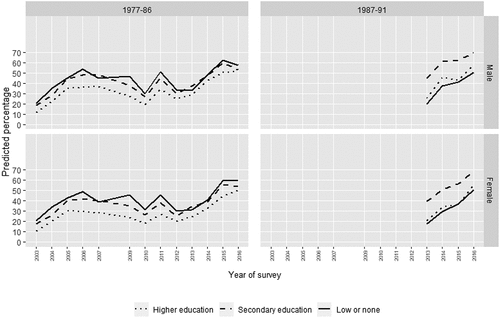
Figure 8. Predicted percentage supporting Independence among people with Scottish identity, by year of survey, sex, birth cohort, and education: birth cohorts 1927–36, 1957–66, and 1977–86.
